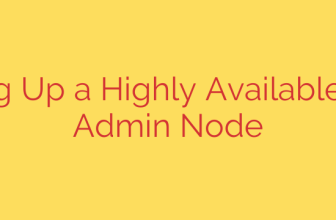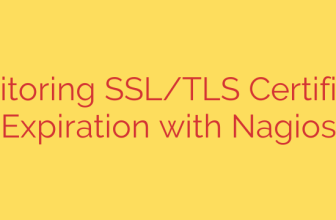
Fortify Your Endpoints: Advanced RDP Security and Proactive Ransomware Prevention
In today’s complex digital landscape, the security of your endpoints is non-negotiable. Two of the most persistent threats facing businesses are brute-force attacks on Remote Desktop Protocol (RDP) connections and the ever-present danger of ransomware. As remote work becomes standard, securing these access points and protecting critical data has shifted from a best practice to a fundamental business necessity.
A modern cybersecurity strategy requires a multi-layered approach—one that not only defends against known threats but also proactively identifies and neutralizes new attack vectors. Let’s explore the latest advancements in endpoint protection that are empowering IT teams to build a more resilient and secure infrastructure.
Securing the RDP Gateway from Brute-Force Attacks
The Remote Desktop Protocol is an invaluable tool for remote administration and work, but its convenience makes it a prime target for cybercriminals. Attackers constantly scan for open RDP ports and use automated tools to launch brute-force attacks, attempting to guess login credentials to gain unauthorized access. Once inside, they can deploy ransomware, exfiltrate data, or move laterally across your network.
Traditional security measures are often not enough to stop these persistent attacks. A truly effective solution must provide intelligent, dynamic protection.
Key advancements in RDP security now include:
- Active Brute-Force Attack Prevention: Modern systems can automatically detect and block IP addresses that exhibit suspicious login behavior, such as an excessive number of failed attempts. This stops attackers in their tracks before they can guess the correct credentials.
- Time-Based Access Control: You can enforce policies that restrict RDP access to specific business hours. This simple yet powerful measure dramatically reduces the attack surface by ensuring connections cannot be attempted overnight or on weekends when they are less likely to be monitored.
- Geofencing and Country-Based Blocking: If your business operates within specific geographic regions, there’s no reason to allow login attempts from other parts of the world. Blocking RDP access from unauthorized countries is a highly effective way to eliminate a significant volume of automated attacks.
By implementing these layers of RDP protection, you transform a common vulnerability into a hardened and secure access point.
A New Defense Against Ransomware: Halting Unauthorized Encryption
Ransomware remains one of the most destructive forms of cybercrime. A successful attack can halt business operations, lead to catastrophic data loss, and result in massive financial and reputational damage. While traditional antivirus solutions are important, they often rely on known signatures, leaving them vulnerable to new, zero-day ransomware variants.
The next evolution in ransomware defense focuses on behavior rather than signatures. This approach, known as Ransomware Encryption Protection, monitors file system activity in real-time to detect and stop the attack as it happens.
Here’s how it works:
- Continuous Monitoring: The system constantly watches for processes that are attempting to rapidly encrypt files on a local or network drive.
- Behavioral Analysis: It identifies the tell-tale signs of a ransomware attack—such as the mass modification of files, changing file extensions, or creating ransom notes—without needing to have seen the specific malware strain before.
- Instantaneous Blocking: The moment malicious encryption behavior is detected, the offending process is immediately terminated.
- Device Isolation: To prevent the threat from spreading, the compromised device can be automatically isolated from the network, protecting other endpoints and servers.
This proactive method is a game-changer because it stops the core action of the ransomware—data encryption—thereby neutralizing the threat before any significant damage is done.
Streamlining IT Operations with Remote OS Installation
Beyond direct threat defense, effective endpoint management is a cornerstone of good security. Ensuring every device in your organization is running a clean, standardized, and fully patched operating system is critical. However, managing this manually is a time-consuming and error-prone process for IT teams.
To solve this challenge, leading endpoint management platforms are now incorporating remote Operating System (OS) installation capabilities. This allows administrators to deploy a golden OS image to any machine on the network directly from a centralized console.
The benefits are clear:
- Consistency and Security: Every new or repurposed machine starts with a pre-configured, secure, and fully updated OS, free from clutter or potential vulnerabilities.
- Rapid Deployment: IT teams can re-image a compromised machine or set up a new employee’s computer in a fraction of the time it would take manually.
- Reduced Administrative Overhead: This feature eliminates the need for physical intervention or complex deployment scripts, freeing up valuable IT resources to focus on other strategic initiatives.
Actionable Security Tips for Your Organization
While advanced tools provide a powerful shield, they should be complemented by foundational security practices. Here are five essential tips to enhance your security posture:
- Enforce Multi-Factor Authentication (MFA): Require MFA for all remote access, especially for RDP and VPN connections. This is one of the single most effective ways to prevent unauthorized access.
- Implement the Principle of Least Privilege: Ensure users only have access to the data and systems they absolutely need to perform their jobs.
- Maintain a Rigorous Patch Management Program: Regularly update all software, operating systems, and applications to protect against known vulnerabilities.
- Conduct Regular Employee Security Training: Your employees are your first line of defense. Train them to recognize phishing attempts and follow security best practices.
- Develop a Robust Backup and Recovery Plan: Regularly back up all critical data using the 3-2-1 rule (three copies, on two different media types, with one copy off-site). Test your recovery process periodically to ensure it works.
By combining cutting-edge technologies for RDP security and ransomware prevention with disciplined IT hygiene, organizations can build a formidable defense against today’s most pressing cyber threats.
Source: https://heimdalsecurity.com/blog/heimdal-5-0-0-release/








